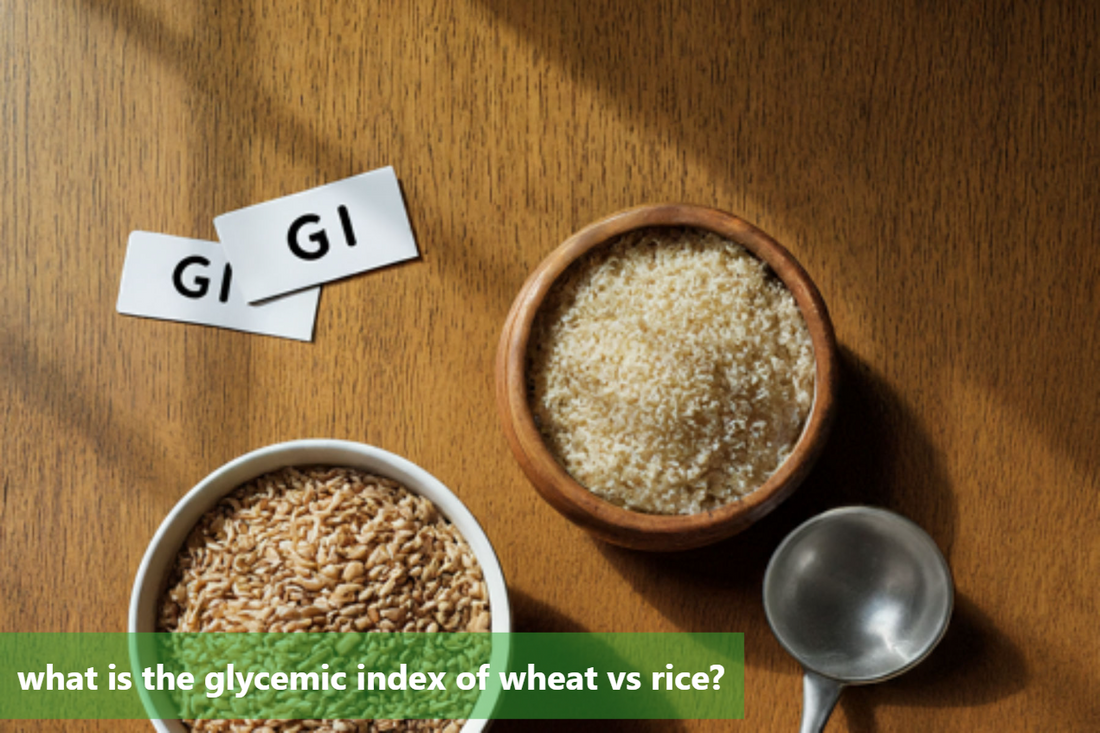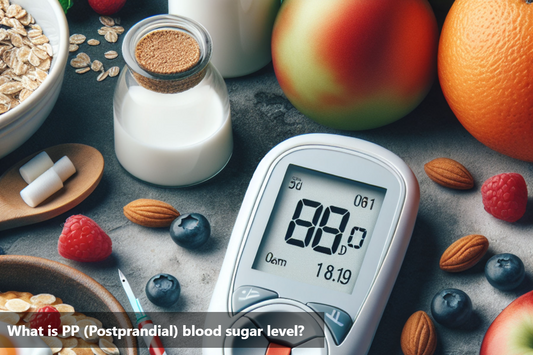The glycemic index (GI) measures how quickly certain foods raise blood sugar levels and plays a significant role in diet planning. It is based on a scale from 0 to 100, with higher values causing a quick spike in blood sugar levels. Incorporating low-GI foods into the diet can help in blood sugar management and weight loss, especially for individuals with diabetes. Understanding the GI of specific foods allows informed choices about carbohydrate intake and meal planning. Overall, the glycemic index is valuable for making informed dietary choices and managing blood sugar levels effectively.
Understanding the Glycemic Index of Wheat
The glycemic index (GI) of wheat measures its impact on blood sugar levels. Factors like grain structure and processing affect the GI. High GI wheat causes rapid blood sugar spikes, critical for diabetics and weight management. Low GI wheat promotes steady blood sugar increase, benefiting overall health. It also aids in blood sugar control, heart disease prevention, and weight management. Choosing low GI wheat products supports sustained energy and appetite control. Considering the GI of wheat helps make informed dietary choices for better well-being.
Understanding the Glycemic Index of Rice
The glycemic index (GI) of rice measures how fast it affects blood sugar levels. Variations in factors like rice type, cooking method, and processing impact the GI. For instance, brown rice has a lower GI due to its fiber content. Finer milling increases the GI. Certain nutrients added during cooking, like vinegar or lemon juice, can lower the GI of rice-based meals. High-GI foods cause rapid spikes in blood sugar, leading to hunger and weight gain. Choosing low-GI rice and pairing it with other healthy foods stabilizes blood sugar levels and promotes well-being. Understanding the GI helps make informed dietary choices.
Comparison of Glycemic Index: Wheat vs Rice
Aspect |
Wheat |
Rice |
|---|---|---|
Glycemic Index |
Lower |
Higher |
Impact on Blood Sugar Levels |
Slower and more gradual increase |
Quicker and more significant increase |
Blood Sugar Management |
Helps in avoiding sudden spikes |
Can cause challenges in management |
Recommendation |
Opt for wheat products |
Consider implications before consumption |
Considerations |
Portion size, cooking methods, and accompaniments |
Impact of various factors |
In conclusion, understanding the difference in the glycemic index of wheat and rice empowers individuals to make informed dietary choices, ultimately contributing to better management of blood sugar levels and overall health.
Bottom Line:
In conclusion, understanding the glycemic index of rice and wheat is important for making informed dietary choices. The glycemic index of rice and wheat affects blood sugar levels. Rice has a higher glycemic index, while wheat has a lower glycemic index. Processing and cooking methods can influence their glycemic index. Opt for whole-grain wheat and brown rice for lower glycemic index values. Incorporate wheat and rice with protein, healthy fats, and fiber-rich foods to mitigate the glycemic response. Prioritize whole grain options and mindful portion control for a balanced diet while considering their glycemic index. Making informed choices about the types of grains consumed can positively influence overall health.
FAQs:
Q: What is the glycemic index (GI) of wheat?
A: The glycemic index of wheat varies depending on the type, but most whole wheat products have a GI ranging from medium to high, around 54 to 69.
Q: What is the glycemic index (GI) of rice?
A: The glycemic index of rice also varies depending on the type, but generally, white rice has a high GI of around 72, while brown rice has a medium GI of around 50.
Q: How does the GI of wheat compare to the GI of rice?
A: Generally, rice has a higher GI compared to most types of wheat. White rice has a higher GI than most wheat products, while brown rice has a slightly lower GI than white rice but still higher than many wheat products.
Q: Can a low GI diet help in managing blood sugar levels?
A: Yes, consuming foods with lower GI, such as whole wheat products and brown rice, can help in managing blood sugar levels as they lead to a slower and steadier rise in blood sugar compared to high-GI foods.
Q: Are there any health benefits associated with choosing foods with lower GI?
A: Yes, choosing foods with lower GI, such as whole wheat and brown rice, can help in improving insulin sensitivity, managing weight, and reducing the risk of developing type 2 diabetes.
This Blog post is an initiative by DiabeSmart, to provide accurate and Nutritionist / Doctor approved information related to Diabetes. DiabeSmart is India's first Food brand designed specifically for Diabetics, that has been clinically tested on Diabetics and Pre-Diabetics to deliver 55% - 70% lower Sugar spikes. DiabeSmart is part of Lo! Foods - India's leading brand for Everyday Functional Health foods.















